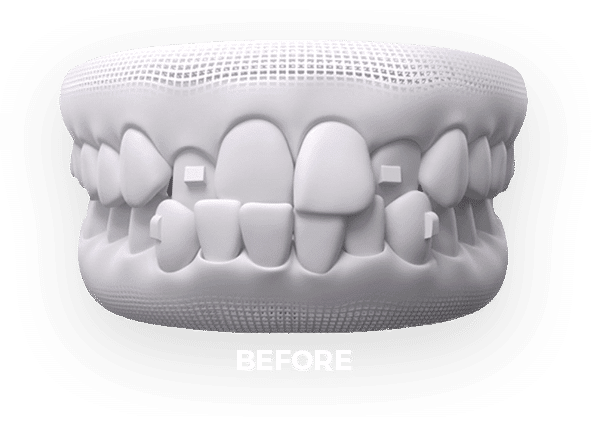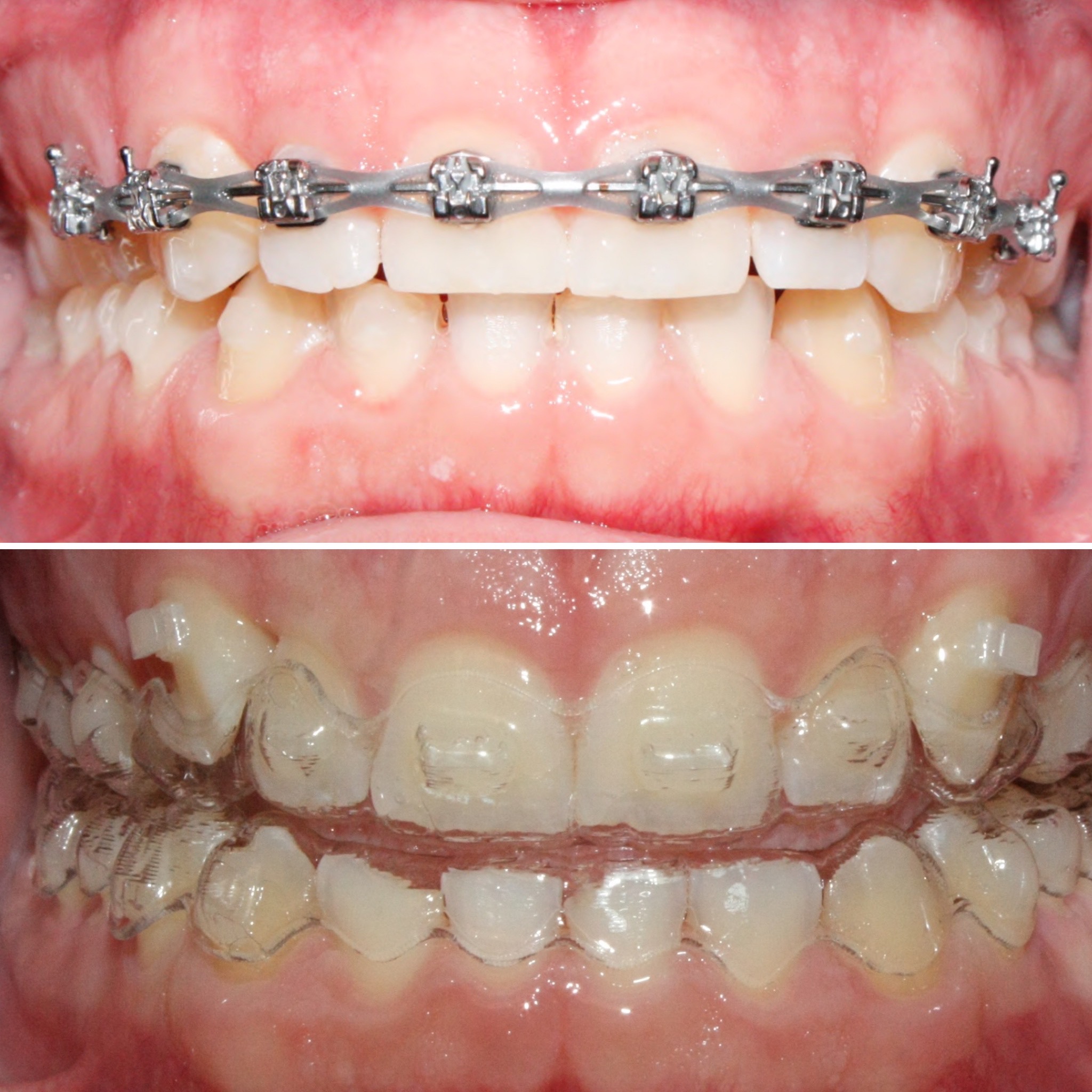Invisalign vs. Conventional Dental braces: Which Option Is Right for You?
When thinking about orthodontic treatment, the choice between Invisalign and traditional braces offers a number of crucial elements that merit careful assessment. Invisalign offers a very discreet choice with removable aligners, while conventional braces provide a more noticeable yet reliable service for severe imbalance.
Introduction of Therapy Alternatives

In contrast, typical braces contain metal braces and wires that are bound to the teeth. This method applies continuous stress over time to accomplish placement. While effective for complicated orthodontic concerns, conventional dental braces require routine gos to for changes and can posture challenges in keeping dental hygiene because of the trouble of cleaning around braces and cables.
Both options have their merits, and the choice typically depends upon details dental conditions, lifestyle preferences, and client compliance. Inevitably, seeking advice from an orthodontic specialist is essential for figuring out one of the most ideal therapy strategy tailored to specific requirements. Comprehending the subtleties of each choice can substantially affect the overall success of orthodontic therapy.
Visual Factors To Consider
A substantial factor affecting the choice between Invisalign and traditional dental braces is the visual charm each treatment provides. Invisalign aligners are crafted from clear plastic, making them essentially unseen when put on. This very discreet appearance is particularly interesting grownups and young adults who may really feel awkward regarding their orthodontic treatment. The capability to maintain a natural smile throughout the placement process can considerably enhance the person's self-confidence in specialist and social settings.
On the other hand, conventional dental braces consist of steel braces and wires, which can be extra recognizable. While improvements in orthodontic technology have actually resulted in the growth of smaller braces and tinted elastics, conventional dental braces still maintain an even more conspicuous account. For some individuals, the presence of braces might discourage them from looking for required therapy.
Ultimately, the option between Invisalign and typical braces may pivot on personal preferences regarding aesthetics. Individuals who prioritize discernment frequently lean towards Invisalign, while those that are less concerned concerning exposure might select conventional dental braces. Understanding the aesthetic effects of each choice is critical for making an informed decision that lines up with one's way of living and choices.
Convenience and Convenience

In terms of comfort, Invisalign aligners are removable, enabling patients to appreciate their preferred foods without limitation and maintain optimum dental health. Brushing and flossing are simplified, as the aligners can be obtained throughout these routines, whereas typical dental braces require careful maneuvering around wires and braces.
Furthermore, Invisalign's progressive system permits for fewer orthodontic check outs. Patients usually get multiple collections of aligners at when, which can streamline the therapy process and lower time spent in the orthodontist's chair. In contrast, traditional dental braces necessitate regular modifications, making them much less hassle-free for those with busy routines. Invisalign. In general, the convenience and benefit advice of Invisalign make it an enticing choice for lots of individuals looking for orthodontic therapy.
Therapy Duration and Efficiency
While both Invisalign and traditional braces are reliable in fixing oral imbalances, the period of treatment can vary substantially between the two choices. Typically, Invisalign treatment can take anywhere from 12 to 18 months, depending upon the intricacy of the instance. The clear aligners function by gradually shifting teeth into their preferred placements, and normal follow-ups with an orthodontist help guarantee development continues to be on track.
On the other hand, standard dental braces commonly call for a longer dedication, generally varying from 18 months to three years. This is because of their fixed nature and making use of cables and brackets, which can be much more efficient for intricate instances and extreme imbalances (Invisalign). The therapy efficiency of standard dental braces is well-documented, as they permit exact modifications and higher control over tooth movement
Ultimately, the choice between Invisalign and traditional dental braces might depend upon both the expected treatment duration and the specific dental concerns handy. Consulting with an orthodontist is critical, as they can give customized suggestions based on individual needs, making sure the chosen technique lines up with wanted end results and durations.
Price Contrast and Insurance Coverage Choices
Cost plays a substantial function in the decision-making process for people considering orthodontic therapy, whether choosing Invisalign or traditional dental braces. On standard, the cost of Invisalign arrays from $3,000 to $8,000, while conventional braces typically set you back between $2,000 and $6,000. Variables affecting these costs consist of the complexity of the situation, the duration of therapy, and geographical place.
Insurance protection can considerably influence out-of-pocket expenses. my explanation Several dental insurance policy strategies provide partial insurance coverage for orthodontic treatments, yet the specifics can vary commonly. It is crucial for individuals to evaluate their insurance policies to establish the degree of insurance coverage for either option. Normally, traditional braces might be more regularly covered by insurance plans compared to Invisalign, which some insurance companies categorize as a cosmetic procedure.
Furthermore, numerous orthodontic practices provide versatile settlement strategies, making both therapy options more easily accessible. People should ask about prospective funding alternatives and price cuts for ahead of time settlements. Reviewing the overall expense, consisting of insurance policy advantages and repayment strategies, is necessary for making an educated choice that straightens with both aesthetic preferences and budget factors to consider.

Verdict
In recap, the choice between Invisalign and conventional braces hinges on multiple factors, consisting of visual choices, comfort, therapy period, and expense. Invisalign uses a discreet, removable option that facilitates dental health and dietary versatility, while conventional braces may be preferable for complicated dental issues and often come with a lower cost point. Inevitably, appointment with an orthodontist is necessary to examine private situations and determine one of the most appropriate therapy choice for achieving optimum dental alignment.
When taking into consideration orthodontic therapy, the choice between Invisalign and traditional dental braces provides numerous crucial elements that warrant cautious evaluation.Contrasting Invisalign and standard braces reveals unique treatment alternatives for orthodontic modification.While both Invisalign and conventional dental braces are efficient in correcting oral misalignments, the period of treatment can differ considerably in between the 2 options.Expense plays a significant function in the decision-making process for individuals considering orthodontic therapy, whether deciding for Invisalign or conventional dental braces.In summary, the option between Invisalign and typical braces hinges on anchor numerous factors, consisting of visual preferences, comfort, therapy duration, and expense.